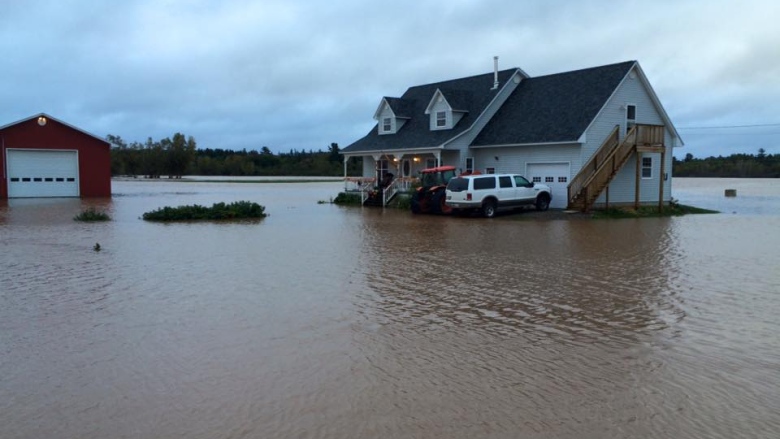Flood coverage to be extended to 42,000 New Brunswick homes
Previously uninsurable homes expected to get coverage, but MLA says government needs to alert public

The Insurance Bureau of Canada estimates 90 per cent of homes in New Brunswick that are at risk of flooding and are currently uninsurable will be eligible for insurance in the next few of years.
But that means those homes would no longer be eligible for the province's disaster assistance program and Progressive Conservative MLA Jody Carr sees the shift in coverage as a disaster in the making.

"Homeowners who in the past have relied on disaster relief funding in time of need, if they get caught caught in government quagmire down the road ... I can see that the homeowner is going to be out of luck," said Carr.
"I think it's very disastrous."
I think it's very disastrous.- Jody Carr, Progressive Conservative MLA
The IBC has identified 47,000 at-risk homes in New Brunswick, meaning the residences are prone to flooding. In the past, homeowners wouldn't have been able to get insurance, but now the industry predicts 42,000 of those residences will be insurable.
Extended water coverage from insurance companies already started about a 18 months ago, and more coverage from more companies is only expected to continue over the next few years, according to Amanda Dean, IBC's vice president for the Atlantic region.

The IBC believes government has a big role to play in letting homeowners know they may now be able to obtain insurance.
New Brunswick's legislative climate change committee, which Carr is a member of, heard from Dean and three of her colleagues this week on increased insurance coverage.
'It's something we'll have to check into'
Andrew Harvey, Liberal MLA and chair of the climate change committee, says he's only hearing about the issue for the first time this week.
He plans to find out more details on extended coverage.
"It's something we'll have to check into and make sure everybody knows obviously," said Harvey.

Carr asked the assistant deputy minister from the Department of Public Safety if there were already plans in the works to alert New Brunswickers about more insurance being available, since some companies have already started offering extended coverage.
Mike Comeau said he was not aware of the issue and would look into it.
"If this information has been held by municipalities and government, then I think there's a lot more serious questions about why the homeowners haven't been told," said Carr.
More than 70 communities were affected by flash floods last fall in New Brunswick.
The damage was estimated to be more than $15.3 million.
The province's disaster assistance program provides up to $120,000 for private homes and a maximum of $500,000 for small businesses which are not eligible for insurance.